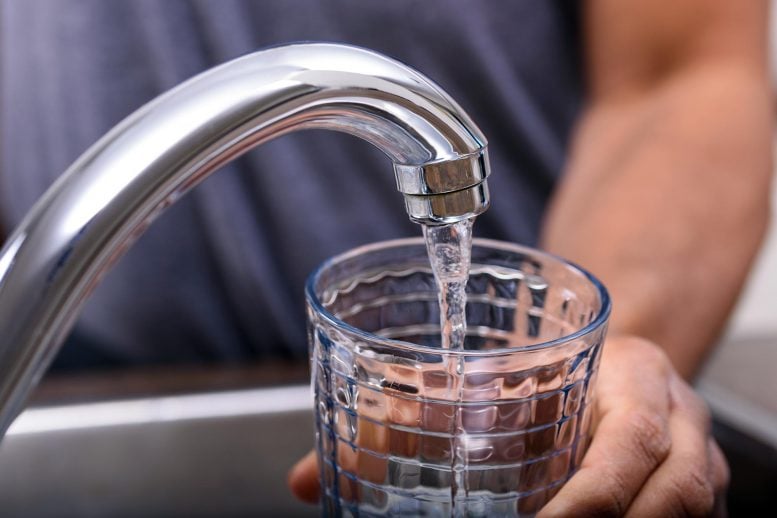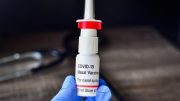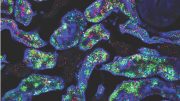
Microplastics in our drinking water represent a significant source of microplastics in the human diet.
Emerging environmental contaminants, both chemicals, and particulates, have been a concern for risk scientists for many years. Methods for reducing health and environmental risks from particles are still evolving. Micro/nanoplastic particles are one environmental contaminant that has recently received research and media attention, and scientists are only beginning to study their potential for adverse environmental and human health effects.
In an effort to understand the potential risks associated with exposure to micro/nanoplastics, the Emerging Risks of Micro/nanoplastics: Perspectives From Diverse Sectors symposia at the 2020 Society for Risk Analysis virtual Annual Meeting, December 13-17, 2020, aims to highlight the current state of knowledge associated with physical and chemical transformation, hazard characterization, environmental effects, social implications, and policy limitations.
Scott Coffin, Ph.D., California State Water Resources Control Board, will present the world’s first regulatory investigation of microplastics in drinking water. His presentation, “Microplastics in drinking water: California’s path towards assessing risks and developing regulations,” outlines the state’s ongoing implementation efforts of a 2018 Senate Bill, that require the State Water Resources Control Board to i) standardize the definition, ii) develop measurement methods for their presence in drinking water, iii) monitor for microplastics in drinking water for four years and publicly disclose the results, iv) consider a health-based guidance level to aid consumer interpretations of the results and v) accredit laboratories to analyze microplastics.
“The standardization of methods to analyze microplastics is urgently needed to reliably compare data from different studies,” states Coffin. “In June 2020, California’s regulatory definition of microplastic was adopted, which provides regulatory agencies, policymakers, and researchers with a common language for a diverse group of contaminants.”
In New York, researchers detected microplastics in the municipal tap water. James McGrath, University of Rochester, tested water samples from the 30-mile route of the Hemlock Lake water production facility to Georgen Hall on the University of Rochester campus. McGrath’s study, “Silicon nanomembranes for the evaluation of microplastic entrainment along a municipal water delivery route,” used tools and methods that are easier than current protocols for the capture and assessment of microplastics. The nanomembrane filtration tools enable rapid detection of microplastics and other debris.
Despite the Hemlock Lake facility producing nearly debris-free water, entrainment increased the amount of debris along the route and the water delivered to the Hall was polluted with large amounts of micro debris, including plastics. Broad surveillance, as demonstrated in this study, will need to be implemented to curb the growing level of pollution from plastics.
These studies will be presented on December 17 from 10:00 – 11:30 a.m. ET as part of the 2020 Society for Risk Analysis virtual Annual Meeting.









A word of warning to men & women about microplastic taken internally. I am 71 and suffering from BPH (Benign Prostate Hyperplasia-or enlarged Prostate). The frequent urination associated with the prostate’s constriction of the urinary tract can cause frequent urination during the sleeping hours, robbing the sufferer of much needed rest. After 2-3 years of coping with symptoms, and avoiding foods and products that exacerbated the problem, I managed to improve to a point where I seldom got up more than once a night to urinate. That all changed with a cup of Red Rose tea, the result of drinking which forced me to arise almost once every hour for a bathroom visit (5 times in 6 hours). I had already seen news reports of the breakdown of many modern (plastic) teabags into thousands and thousands of particles from the heat of the boiling water. I tried an experiment, to see if the bags were actually causing the exacerbation of my BPH. After my symptoms had reduced to what had been normal (2 weeks later), I cut open one of the bags, and poured the tea out into a tea screen, in a special pot for drinking tea made from grinding up various herbs to make tea. Then I boiled the water to make enough for a large cup of the tea in question, and drank it about an hour before retiring. Low and behold, I did not have to urinate more than once, over a seven hour period, and was able to have a good rest! I contacted the corporation who now owns Red Rose, and told them of my problem, and was given a suggestion from their customer service to try another of their tea products, that had less plastic in the bags. I reminded their customer that tea bags were made from paper for over a hundred years, and asked why they would change to something that obviously creates health problems, and received no answer from that question.
After this situation, I shifted my focus into other problems that have been linked to microplastics in humans. Exeter University had found correlation between the internalization of microplastic, and both prostate and breast cancer. Bisphenol-A, a favorite lining for tin cans containing food, has also been linked to cancer, and I have found the same kind of reaction as with plastic tea bags, from soups canned with BPA in the tins, just recently.
We are killing ourselves with the use of technologies in food packaging that are not properly tested, or used anyway by uncaring corporations that put profit over the health of their customers (Yes, I mean you, Unilever!)
Our society should be taking a long look at what we are being given as part of our food supply, and corporations that know better, and continue dispersing unsafe products should pay for the hospitalization and rehabilitation of everyone who has suffered a reduction of good health as a result of any corporation putting profits before the safety of consumers!
Looking through the internet, one see microplastic becoming a star in investigations involving many diseases, and find pages and pages of incidents. A simple test of a tea bag is to hold a flame close to the bag, and see if the bag wilts from the heat. This is a good indicator of the bags material. Originally, I had found in my research a link at reddit where a tea drinker found out by accident that the bag was made from plastic, with the heat test. Good Health and Happiness to everyone, but watch what you ingest…..your life may depend on it!
So why is entrainment done if it increases water pollution and micro debris? How our ancestors did it for water supply below the ground which was fresh water from lakes and ground water?